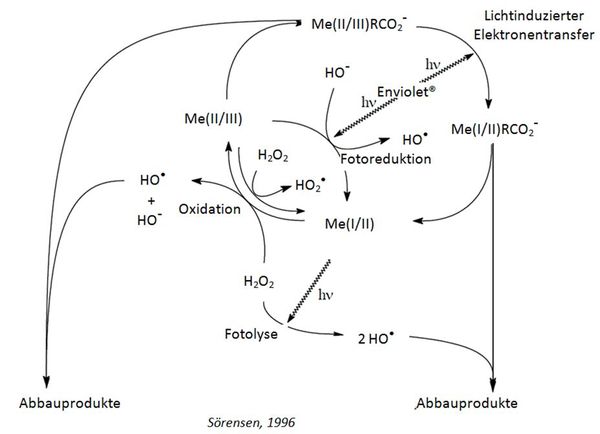uv reactors, photo-oxidation, advanced oxidation (aop), recycling & engineering
for industrial use
UV-Oxidation
Photo-Oxidation
Photo-Fenton Reactions
If Fenton, Photo-Fenton, UV-oxidation, or photo-oxidation - we know what matters in oxidation!
Another possibility of the UV-induced degradation process is the use of metal ions as catalysts, which, depending on the treatment objective and the substance of the wastewater, may lead to a better process efficiency. The best-known process is the photo-Fenton process, for which solutions containing iron are used as catalysts. On the basis of various photoreactions, hydroxyl radicals are generated via photoreduction of the metal ions and initiate the degradation process described above. In addition, many other reactions play a part in this process, also resulting in the degradation of organic water ingredients.
By means of an intra-complex charge-transfer-reaction shown above, photoreactions become very effective when well applied. Many reactions which are happening in parallel or in sequences play important roles in the photo-Fenton reaction, as they also lead to the oxidation of the target(s). The photo-Fenton reaction shows many advantages in comparison with the classical Fenton reaction:
- Degradation in the photo-Fenton reaction is many times higher, as the classical Fenton reactions become self-locking through the increasing sludge volume.
- Operational cost of the photo-Fenton process are significantly lower, as the chemical consumptions are lower.
- The photo-Fenton process leads to negligible formation of sludge, whilst the classical Fenton entails a wearisome and costly removal of the sludge.
Further details in comparing Fenton and Photo-Fenton - click here!








